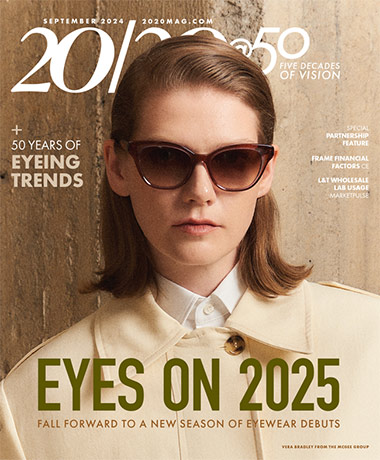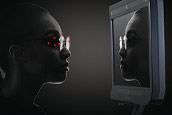
|
Did you watch last week’s Mad Men? If you did, you’re in good company: Every week, over four million viewers tune in to the AMC series, with untold more catching it on Netflix. Currently in its sixth season, with one more season scheduled to wrap up the series in 2014, Mad Men has proven to be one of the most influential television series of the new millennium, impacting American society in a way not seen since Seinfeld.

|
WHAT’S MAD MEN?
Before we discuss The Mad Men Effect, it’s probably worth discussing Mad Men. Mad Men is a television series set against the backdrop of 1960's Manhattan, following the lives of a group of executives at a fictional Madison Avenue ad agency. Principal among these executives is Don Draper, a basically good but morally conflicted creative agent who unconsciously sabotages his own happiness through a variety of addictions and by emotionally distancing himself from those around him. Rather than relying on action, lavish locations, or sensational plotlines, the show employs deeply drawn characters and polished dialogue to tell interesting yet realistic stories that capture the frustrations of life in a rapidly changing age.
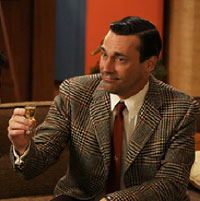
|
WHAT’S THE MAD MEN EFFECT?
The Mad Men Effect is a term used by sociologists to refer to a variety of sociocultural reactions to the series, running the gamut from renewed discussions of women’s roles in the workforce to a reassessment of popular perceptions of the 1960's to a fascination with mid-20th century American culture in general...
AND YOU’RE TALKING ABOUT THIS BECAUSE...
...to a tremendous effect on the fashion industry. (You thought this had been published in the wrong place, didn’t you)? Indeed, the phrase "Mad Men Effect" has often been used to refer solely to the drastic change in clothing witnessed in the wake of Mad Men’s first season. If you’ll recall, the early 2000's was something of a... shall we say... ugly time. Skater and emo culture had largely taken the place of the grunge look for young individuals, while the adult world found itself awash in the murky tides of "business casual." The glasses of that era, especially, deserve a place right beside those of the 70's as some of the most unflattering and inefficient ever to adorn the faces of the optically challenged. Women, do you remember those tiny plastic frames with a B measurement the size of your thumb that weren’t progressable and gave you no peripheral vision? Or gentlemen, how about walking into a dispensary and finding that your choices were either stainless steel rectangles, aviator glasses, or the same eensy plastics your girlfriend has to pick from?
We all do.
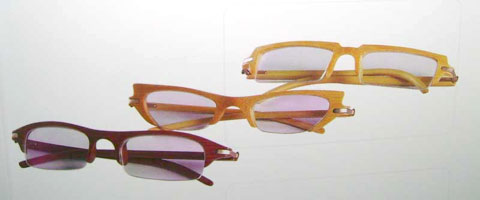
|
|
Eensy frames of the early 2000’s |
It was into this sartorially challenged atmosphere that Mad Men premiered; and all across America, viewers took a look at the fashion of a more image conscious era and collectively said to themselves, "Wait... I remember now. I don’t have to look like crap."
And there we have the Mad Men Effect. In fact, sociologists credit the fashion aspects of the Mad Men Effect to a general backlash against the clothing of the 1990's, in particular the emphasis on casual wear in every environment.
And glasses... oh, the glasses.
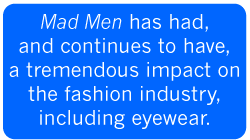
|
Next to hipsterdom’s fascination with everything outside of the mainstream at a given moment, Mad Men played perhaps the biggest role in the radical shift from the eyeglass styles of the early 2000's to those currently filling our dispensaries. Hipsters had already partially latched on to vintage inspired frames, though in their case, they were black Wayfarer knockoffs with clear lenses—a combination not really found back in the day. The general drift towards 60's aesthetics led to a proliferation of larger zyl frames being offered up, though usually in much less chunky versions of what would have been worn in that era. Thus began a tug-of-war, give-and-take between hipsters and mainstream fashion, as each attempted to reappropriate 60's fashion for themselves. Mainstream had their larger, thin zyls. So hipsters retaliated by rediscovering "authentic" retro frames in the form of chunky, boxy zyls. Mainstream fashion, seeing these frames on young, hip, "cool" people, decided to take the frames for themselves. So hipsters responded by rediscovering other vintage styles such as cateyes and browlines. And so the tug of war has gone on; and through it all, Mad Men—or rather, its producers—have laughed all the way to the bank, endlessly profiting from the environment of 60's love the show has helped to foster.
(A serious question—do you carry Banana Republic frames in your dispensary? Or Brooks Brothers? It might interest you to know that both designers provide clothing for the show, with the former actually carrying Mad Men lines in store. That’s right: You’re pretty much selling Mad Men glasses.)

|
|
Banana Republic 60's fashion revival based on the Mad Men Effect |
ANYWHO... So Mad Men has had, and continues to have, a tremendous impact on the fashion industry, including eyewear. Is there a point beyond that? In a way... no. That’s the simple truth of it, laid out here for you in pleasing, easy to read, twelve-point font. What’s to be learned here isn’t in the lesson itself, though. True cultural phenomena are hard to come by; perhaps once in a generation. Those that have a lasting impact beyond one or two media are even rarer. (Yes, we all loved Leo and Kate and My Heart Will Go On was everywhere, but, no one started wearing Edwardian clothing). Keeping abreast of such things, sharing in them and becoming a part of them, allows us to plug into the conduit of the human system and lets us not only understand our culture, but one another; to share in a common bond between individuals as it exists at a given time, in a way that is unique to the moment and will never recur in the exact same way again.
So, next Sunday, if the kids are tucked away, or you’re just bored, or curious, flip the channel over to AMC. Share the experience. At the very least, you’ll see what the Mad Men Effect is all about. And hey... You might enjoy it.



